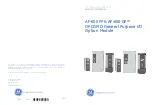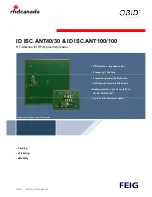
ZB2044
December 2007
Page 53
TM
Section 2 - Operation
Handling Loads
2.14 Handling Loads
WARNING
•
Use the capacity charts inside the cab to assess
if the lift is within the capacity of the telehandler.
•
ZB2044 model has two capacity charts for each
attachment based on deployment of outriggers.
•
Ensure that the load center for the load is at or
within 24 inches of forks.
•
Use a spotter when possible to assist in handling
the load. (refer to forklift signals label located
inside operator’s cab).
Front Face
of Forks
Figure 2-18 Load Center
2.14-1 Handling Loads at Ground Level
Picking up a Load
1.
Move the transmission lever to neutral and apply
parking brake.
2.
Check that the telehandler is level using the level
indicator. Adjust frame level if necessary.
3.
Ensure the forks are as
far apart as possible for
the width of the load. This
increases the stability of
the load and the lift.
4.
Approach load slowly
with forks straight ahead
and perpendicular to the
load.
5.
Deploy outriggers and
insert forks under the
load and raise it for 5 to
10 inches.
WARNING
Do not extend boom if lifting maximum
rated load; instead, drive into load.
6.
Tilt forks backwards and
fully retract the boom
7.
Raise outriggers, then
check telehandler stability before transporting the
load.
Transporting a Load
WARNING
When transporting a load, always
travel according to jobsite and weather
conditions.
1.
Travel to placement site
with load kept as low to
the ground as possible.
2.
Apply brakes smoothly to bring telehandler to a
complete stop before applying parking brakes.
Placing a Load
1.
Move the transmission lever to neutral and apply
parking brake.
2.
Deploy outriggers and check that the telehandler
is level using the level indicator. Adjust frame level
if necessary.
To
order
go
to
Discount-Equipment.com
















































